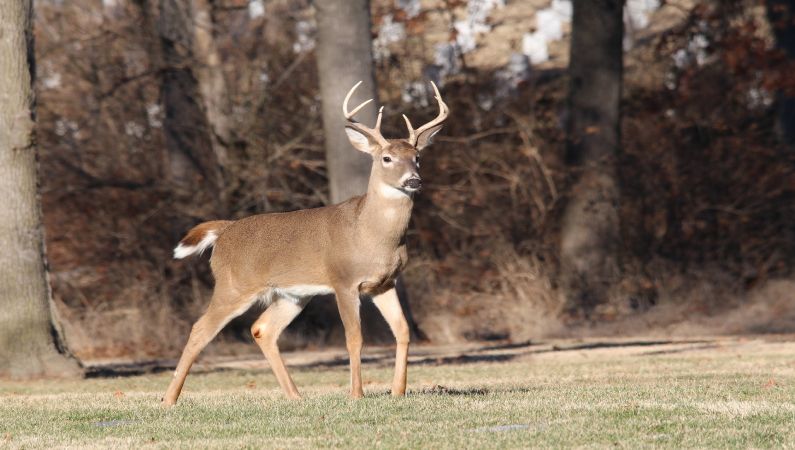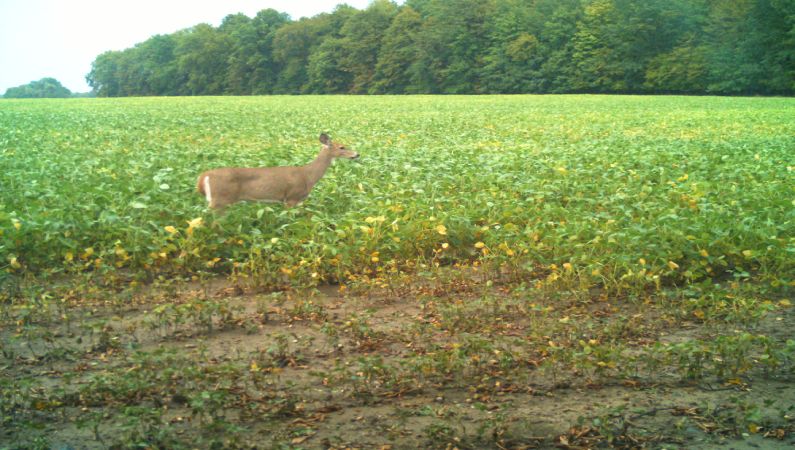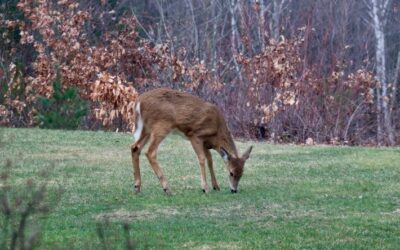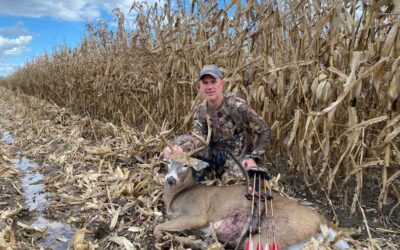This blog post may contain affiliate links. Affiliate links give a small commission of a sale to the affiliate(me). Products are at no extra cost to you.
Shooting a whitetail doe is not as exciting or cool to talk about; nevertheless, it is essential to shoot some of the whitetail does on your property for proper deer management. A good buck-to-doe ratio is a good way of seeing more whitetail bucks during the rut.
The reason behind shooting a whitetail doe
A common problem in the whitetail hunting world is not being able to see big mature bucks during the rut. Many people think that because they do not see those types of bucks they must not be on their property.
This is most likely not true. I know this because I hunt on a small, mile-block farm property in the middle of Michigan. My property is by no means ‘prime for whitetail bucks.’
However, the trail camera pictures and hunting experience have proven the statement above incorrect. I have seen plenty of nice mature bucks on my property.
Mature bucks are everywhere, it does not matter the size of your property. Deer are territorial animals. That is why they create rubs and scrapes. It is a way that bucks to mark their territory to let other deer know they have claimed this territory.
When a different buck wants to come into another buck’s territory, we see them fight over the territory. But there is more than just territory, the does in that territory may be hot. That would be a reason another buck would challenge for territory.
The reason I try to shoot a whitetail doe every year in October

Shoot a doe or two in the early parts of your state’s whitetail season. This will not only put meat in your freezer, but it will help increase your odds during the rut.
When there are fewer hot does on a property, the bucks are forced to go find different hot does. This causes those bucks to get out and run during daylight. This is their nature to procreate.
This is also the reason that it is not uncommon to see deer that you have no pictures or encountered before. They will travel up to around 10 miles just in search of hot does.
The only problem you may encounter would be having too few does in your location. This would possibly cause bucks to leave to find a new place where there are does. I have never had a problem with bucks leaving an area because I have shot a doe or two in the early weeks of hunting.
What most hunters do not know is that when you go on a paid hunt somewhere, it is common that you must shoot a doe before you can even think about a trophy buck. The property owners make this a rule for a specific reason.
The mindset is that if there are fewer does on their property, it gives them a greater chance of seeing bucks chasing does during the rut. With a good buck-to-doe ratio on their property, they can properly manage and deliver their big bucks.
The problem with having too many whitetail does in your hunting area
Many hunters will not shoot a doe until the end of the season because they are chasing that big mature buck. However, every hunter should know that the opportunity may never present itself again. So, take the opportunities that you do get if you haven’t shot a deer yet that season. Then you can become pickier about what you shoot and what you let walk.
Bucks will chase a hot doe and that is what makes the rut so much fun to experience; however, bucks may also “lock in” on a doe. That means that they will not move anywhere until the doe in heat moves as well. It truly can be a long process.
I was hunting in early November of 2019 when I witnessed this firsthand. It was archery season still here in Michigan and I was hunting on the edge of woods looking over a cut cornfield. I saw two dark spots in the field about 700-800 yards away. So, I pulled out my binoculars and looked.

It was a nice 8-point bedded down with a doe. They were there because it was safe out in the open. I thought to myself, “nothing crazy.” I went home and did not really think about it.
The next morning, I went to the same spot. Once it got light enough, I saw the same two dark spots in the same cornfield. I pulled out my binoculars again and I saw the same two deer in the same spot as the day previous. That was like my ah-ha moment. I finally realized that the bucks really do get locked in and stay with the same doe until they can mate.
The moral of the story is that you do not want all your bucks getting locked in and never coming out in the daylight. By shooting more does in the early season, there will be fewer does for the bucks to get locked in.
This will cause your mature bucks to be out running in search of does in heat more during the rut. Which will translate to more sightings of these mature bucks in daylight and ultimately more shot opportunities.
Shoot more whitetail does in the early season! It is healthy for your property. In order to get more opportunities to shoot a doe, check out this blog post about Strategies for Early Archery Season Success.
Here is another blog post about what a good buck: doe ratio could look like on your properties.
Thank you for visiting The Whitetail Teacher! If you enjoyed this post, make sure to share it with a friend. Also, don’t forget to check out The Whitetail Teacher Merchandise!
If you have any questions or recommendations for new blog posts, please use the contact form.
Learn, Plan, Execute,
The Whitetail Teacher




